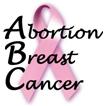Dear Doctor Letter
Re: Medical Malpractice Issues and Abortion-Breast Cancer Research
Dear Doctor:
The world's first abortion-breast cancer medical malpractice settlements were reported in the U.S. and Australia in the years 2003 and 2001 respectively. In each lawsuit, a physician was sued for having neglected to inform an abortion-bound patient about the risks of breast cancer and emotional harm. Significantly, neither plaintiff had developed breast cancer. The amounts of the settlements are undisclosed. 1 2
The plaintiff in the U.S. lawsuit was a 17-year-old Pennsylvania resident when a second-trimester abortion was performed in New Jersey without parental knowledge or consent. The case establishes that a doctor can be sued for battery if the abortion provider performs no-parental-consent abortions on minors from neighboring states (with parental consent statutes), even if the state where the abortion is performed does not have a parental consent statute.
We are writing to urge you to consider for yourself the published evidence linking induced abortion with increased breast cancer risk, so that you may better consider what obligation you might have as a medical professional to properly inform those of your patients who may have a need to know about this research. Abortion is cited as a risk factor in an authoritative medical text used by breast disease specialists. 3
The following language from a Ninth Circuit decision on the law of informed consent highlights a doctor’s duty to inform both himself or herself and his or her patients about the available evidence:
"[W]e believe a risk must be disclosed even if it is but a potential risk rather than a conclusively determined risk. . . . Medical knowledge should not be limited to what is generally accepted as a fact by the profession.... To justify ignorance of this type of risk would insulate the medical profession beyond what is legally acceptable. . . . A literature search will thus put a physician on notice of these risks." 4
In particular, we call your attention to the following article in the medical literature by Joel Brind et al., “Induced Abortion as an Independent Risk Factor for Breast Cancer: A Comprehensive Review and Meta-Analysis.” 5 This article, whose authorship represents both pro-choice and pro-life points of view, has been described by pro-choice epidemiologist Dr. Janet Daling of Seattle's Fred Hutchinson Cancer Research Center as "very objective and statistically beyond reproach." 6 Dr. Clark Heath, Vice President of the American Cancer Society, while testifying in federal court that "statistical associations, however statistically significant they may seem to be, don't guarantee a biologic association," admitted that the Brind review article is "quite extensive and the statistical coverage of the papers and the literature that bear on the induced abortion question is quite thorough." 7
According to the United Kingdom’s Royal College of Obstetricians and Gynecologists’ “Evidence-based Guideline No. 7: The Care of Women Requesting Induced Abortion,” the Brind meta-analysis “was carefully conducted” and has “no major methodological shortcomings and could not be disregarded.” 8
A 1997 cohort study published in the New England Journal of Medicine and reporting no overall positive association is often cited as proof that induced abortion does not increase breast cancer risk. 9 However, even a 1998 CME review article which treated the Melbye study as one of the "most rigorous . . . available" admitted that it has "several [methodological] limitations," and is "not definitive." 10
The Melbye study actually provides strong evidence in support of the biological hypothesis underlying the abortion-breast cancer link, in that it reported that "[w]ith each one-week increase in the gestational age of the fetus . . . there was a 3 percent increase in the risk of breast cancer." 11 For women who underwent abortions after 18 weeks the risk of breast cancer was almost doubled. 12 These findings are in line with the hypothesis that breast cancer risk is increased by the prolonged estrogen exposure of early pregnancy not being followed by the protective hormonal milieu of late pregnancy.
Please also note that Melbye et al. recently published a study which found that premature birth before 32 weeks gestation more than doubles the breast cancer risk which the woman would have had had the pregnancy continued to full term. 13 It is especially noteworthy that Melbye et al. corrected in this new study some of the questionable methods they used in their earlier study on induced abortion. 14
Finally, we call your attention to the following widely read law review article by John Kindley, Esq. “The Fit Between the Elements for an Informed Consent Cause of Action and the Scientific Evidence Linking Induced Abortion with Increased Breast Cancer Risk.” 15 Congressman Dave Weldon, M.D., described this article in a recent letter to all of his colleagues in the House of Representatives as making a "persuasive case for the potential legal liability of abortion providers who do not inform women about the prospect of increased risk for breast cancer following an induced abortion." The article is available on the internet at www.johnkindley.com.
For the sake of your patients, we earnestly request that you take the time to familiarize yourself with the evidence establishing induced abortion as the most avoidable risk factor for breast cancer, and hope that the above references will be of assistance to you in this effort. For additional information about the research, please see our website at www.AbortionBreastCancer.com.
Sincerely yours,
Karen Malec
President
- 1. Reported by Attorney Charles Francis to Patrick Goodenough, Pacific Rim Bureau Chief, CNSNews.com, January 4, 2002
- 2. Stephanie Carter v. Charles Benjamin, Philadelphia County Court of Common Pleas.
- 3. Bland, KI, Copeland, EM, The Breast: Comprehensive Management of Benign and Malignant Diseases, 2nd ed, Saunders, Phila, NY 1998; v. 1:523.
- 4. Harbeson v. Parke Davis, Inc., 746 F.2d 517, 525 (9th Cir. 1984).
- 5. 50 J. Epidemiology and Community Health 481 (1996).
- 6. Lucette Lagnado, “Study on Abortion and Cancer Spurs Fight,” Wall St. Journal, Oct. 11, 1996, at B4.
- 7. Testimony of Dr. Clark Heath at 121, Christ's Bride Ministries, Inc. v. Southeastern Pa. Transp. Auth., 937 F. Supp. 425 (E.D. Pa. 1996), rev'd, 148 F.3d 242 (3d Cir. 1998).
- 8. (2000) RCOG Press, pp. 29-30.
- 9. Mads Melbye et al., “Induced Abortion and the Risk of Breast Cancer,” 336 NEJM, 81 (1997).
- 10. Bartholomew & Grimes, “The Alleged Association Between Induced Abortion and Risk of Breast Cancer: Biology or Bias?”, 53 Obstetrical & Gynecological Survey, 708, 710-11 (1998).
- 11. Melbye et al., at 83.
- 12. Id.
- 13. Melbye et al., “Preterm Delivery and Risk of Breast Cancer,” 80 British J. Cancer, 609 (1999).
- 14. Joel Brind and Vernon Chinchilli, Letter, "Induced Abortion and Risk of Breast Cancer," ll Epidemiology, 234-235 (2000).
- 15. 1998 Wis. L. Rev. 1595.

